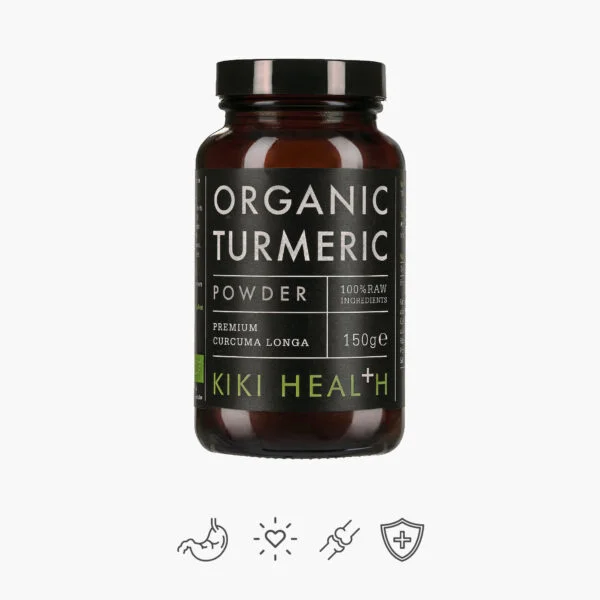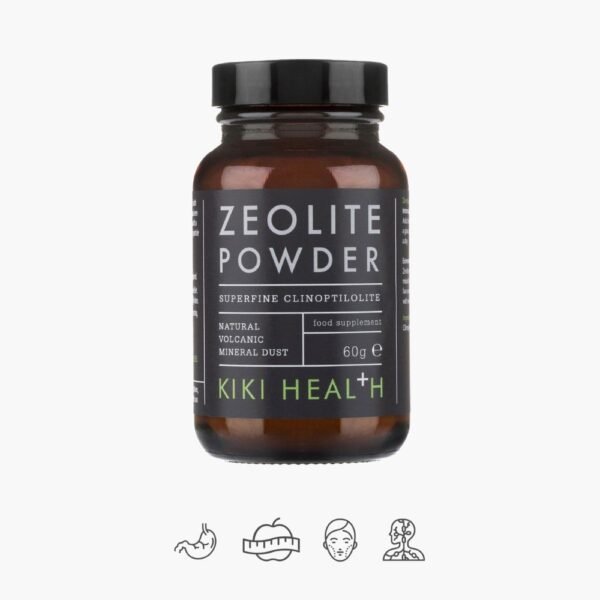Although the scarring of cirrhosis from heavy drinking is irreversible, cutting back on alcohol consumption and living a healthier lifestyle can help your liver recover from fatty liver disease and alcoholic hepatitis. We will provide answers on how to clean the liver.
The liver is the organ that metabolizes alcohol. The average liver can process the equivalent of about one small drink per hour. When you drink excessively, it puts a strain on your liver and disrupts the way your liver processes alcohol. Alcoholism can cause three main liver diseases:
- fatty liver
- hepatitis
- cirrhosis
The sooner a person stops drinking, the better off they will be in the long run. When the liver undergoes fibrotic changes, it cannot be completely restored to its former state.
By always reacting to our feelings in time and helping our body, we can feel much better.
How often do you drink alcohol?
A study in the European Union found that men consume significantly more alcohol than women on a daily basis. Also, men tend to consume more alcohol with age.
More detailed information is provided in the figure:

How much alcohol can be consumed
In order to have a good sense of well-being and health, it is recommended to consume very moderately or, even better, to give up alcohol altogether. We should not exceed 10g (pure alcohol) per day for women and 20g per day for men.
The amount of alcohol consumed by adults should not exceed 5 % of total energy intake. Pregnant women, children and teenagers are recommended to abstain from alcohol completely.
How alcohol affects the liver
Alcohol is known to cause long-term liver dysfunction and damage, especially in those who drink alcohol over a long period of time or consume large amounts of it. Alcohol first damages the liver by accumulating fat in the liver. This stage is called alcoholic fatty liver disease.
This condition causes alcoholic hepatitis, or inflammation and irritation of the liver. Also, this inflammation causes irreversible liver scarring or cirrhosis.
Although fat accumulation and inflammation can be removed, the scarring they ultimately cause is not reversed. A scarred liver is irreversible liver damage with long-term health effects that can be fatal.
If you drink alcohol regularly, you should take steps to learn how to cleanse your liver of alcohol before permanent damage occurs.
What natural nutrients can help the liver
The liver is an organ that is responsible for detoxification: various toxins that we encounter through food, the environment (at home or at work). The environment is very toxic and we can help the liver to effectively continue cleaning our body by naturally supplementing with nutrients.
Turmeric for fatty liver
Turmeric benefits is widely known because it has an anti-inflammatory effect and is a strong antioxidant. Turmeric root polyphenols are also beneficial in reducing the risk of stress-induced fatty liver disease.
The strong antioxidant properties also help protect the liver from harmful free radicals and may even help reduce the risk of cancer-causing cells forming in the body
-
Sale Product on saleKIKI Health Organic TURMERIC- Organic Turmeric with curcumin, 150 g. powder
35,90 €Original price was: 35,90 €.21,50 €Current price is: 21,50 €.
Selenium
Selenium is an important mineral found naturally in the soil and in some foods.
Our body needs to form enzymes (glutathione peroxidase and thioredoxin reductase). These two enzymes are required to indirectly reduce certain oxidized molecules.
Because oxidation is associated with liver damage, antioxidants such as selenium are vital for preserving liver tissue.
What is alcoholic fatty liver disease (AFLD)
Alcoholic fatty liver disease (AFLD) is the first stage of liver disease. In ASKL, fat deposits in the liver cells, damaging them. About 20% of people who drink a lot of alcohol over a long period of time develop ASKL. There are two types of fatty liver disease:
- Non-alcoholic fatty liver disease or NASCL: Of the two conditions, NASKL is not thought to be related to alcohol consumption. However, doctors are currently not sure what causes this condition. Although NASCL is sometimes mild in nature, some patients may progress.
Research has not clearly shown whether small amounts of alcohol are safe to drink if you have NASCL. That's why it's important to talk to your doctor about your specific circumstances to find out whether moderate alcohol consumption is safe or not.
- Alcoholic fatty liver disease or alcoholic steatosis: When you have alcoholic fatty liver disease, your liver cells start to store fat. Drinking alcohol causes your body to produce fat and also prevents your body from getting rid of some of the fat it has. All this extra fat then gets deposited in your liver cells. Some fat can even move from other parts of the body to the liver.
Signs and symptoms of ASKL
Unfortunately, ASKL itself has very few symptoms. The main symptoms of ASKL are:
- Feeling tired
- Discomfort in the upper right part of the abdomen
- Yellow color of the skin or whites of the eyes
Because there are so few symptoms, it can be difficult for doctors to diagnose ASCL in its early stages. The disease is often diagnosed if you have an imaging test or if you have a blood test that again shows problems with liver chemicals. Sometimes doctors can't find alcoholic fatty liver disease until it progresses to a more dangerous condition like cirrhosis.
ASKL treatment
Alcoholic fatty liver treatment mainly depends on lifestyle changes. These changes may include:
- Complete abstinence from alcohol
- Healthy food choices
- Weight reduction if you are overweight
- Exercises that can reduce fat in the liver
Vaccines, such as those for hepatitis A, hepatitis B, pneumonia, and the annual influenza (flu) shot, will not cure ASCI, but may help prevent more serious conditions later. It's also important to talk to your doctor before taking any vitamins, herbs, or supplements. Some products can further damage the liver.
What is alcoholic hepatitis?
Alcoholic hepatitis is an inflammation of the liver, and regular alcohol consumption can promote its development. Inflammation disrupts the liver's normal functions and can cause several distressing and potentially fatal symptoms.
Symptoms and causes of alcoholic hepatitis
Some cases of acute alcoholic hepatitis may not cause symptoms and people may not know until it is more advanced. These symptoms may include:
- A disordered state due to the accumulation of ammonia toxin
- Abdominal swelling caused when the liver does not make enough of a protein called albumin
- Bleeding that can be heavy because the liver doesn't make enough of the protein needed for blood to clot
- Bleeding in the throat caused by weakened blood vessels that occur with hepatitis
- Yellowing of the whites of the skin and eyes, also called jaundice, occurs when the liver is unable to break down a substance called bilirubin. Jaundice causes of alcoholic hepatitis are not dangerous in themselves. However, this indicates that there are other dangerous liver diseases. People experiencing jaundice should seek immediate medical attention.
Heavy alcohol consumption plays a role. Without drinking alcohol, there is almost no risk of developing alcoholic hepatitis. Alcoholic hepatitis inflammation can eventually disappear completely after stopping alcohol consumption.
Several other risk factors, along with inappropriate alcohol consumption, can increase the risk of developing alcoholic hepatitis. These risk factors:
- Poor nutrition
- Immune system disorders or diseases
- Viral diseases, especially hepatitis B or hepatitis C
- Older than 55 years
- Female gender
- Obesity
Treatment of alcoholic hepatitis
Treatment for alcoholic hepatitis involves stopping alcohol consumption and supporting the liver while it heals.
Cessation of alcohol consumption is an essential part of initial treatment because as long as alcohol is consumed, inflammatory responses will be promoted.
The good news is that liver inflammation can go away over time when alcohol consumption is stopped.
Medicines can be used to stop or reduce inflammation. The main drug used to treat alcoholic hepatitis is steroids. These drugs reduce inflammation and suppress the body's immune system. Steroids can also help shorten recovery time.
Although poor diet plays a lesser role, maintaining a healthy and nutritious diet while maintaining an optimal weight has been shown to alleviate the symptoms of alcoholic hepatitis.
In the nutrition category useful tips can be found.
Unfortunately, the inflammation can lead to scarring, also known as alcoholic cirrhosis. These scars cannot be reversed and will have a more permanent, long-lasting effect.
What is cirrhosis
When you drink too much, especially over a long period of time, healthy liver tissue is replaced by scar tissue. Cirrhosis is scarring of the liver. Cells in damaged areas do not work efficiently or stop working altogether.
The more alcohol you drink, the more scar tissue develops and the more cirrhosis progresses. Eventually, your liver stops working as it should. Not everyone who abuses alcohol develops cirrhosis.
Causes and Symptoms of Alcoholic Cirrhosis
Cirrhosis can cause several symptoms that can range from irritating to potentially fatal. The most serious of these symptoms are yellowing of the skin and eyes, increased bleeding and swelling.
- Yellowing of the skin and eyes: Increased yellowing of the skin and whites of the eyes (also called jaundice) is a serious symptom of alcoholic cirrhosis. Jaundice indicates a malfunctioning liver that causes toxins to accumulate that can eventually become fatal. Anyone who experiences jaundice should seek emergency medical attention.
- Increased bruising or bleeding: Bleeding increases because the liver stops producing enough blood clotting components. It can also cause bruising more easily than before. This side effect is dangerous: even a small source of bleeding can cause significant blood loss because the bleeding cannot be easily stopped. If you notice an increase in bleeding, seek help.
- Swelling of the abdomen, legs, feet or ankles: The last important symptom of alcoholic cirrhosis is swelling, especially in the abdomen. This swelling, also called ascites, occurs when the liver stops producing proteins that keep water in the veins. This indicates that the liver is not working as it should. Fluid accumulation in the abdomen can cause serious health problems.
Other symptoms may be weakness and fatigue, decreased appetite, weight loss, muscle atrophy, nausea and vomiting, pain and tenderness in the upper right side of the abdomen, an increase in the number of small, visible blood vessels on the skin, itchy skin, hair loss, or fever.
The development of alcoholic cirrhosis is the progression of liver damage, usually starting as fatty liver disease, which leads to inflammation and eventually scarring of the liver. By 35%, heavy drinkers develop alcoholic hepatitis, greatly increasing the risk of alcoholic cirrhosis.
Treatment of alcoholic cirrhosis
The scarring caused by cirrhosis is usually irreversible, but will continue to worsen as more alcohol is consumed. Cessation of alcohol consumption is vital to stop the progression of alcoholic cirrhosis.
It will also be important to treat any underlying medical conditions affecting the liver. Diseases such as hepatitis or an autoimmune disorder can worsen alcoholic cirrhosis. Doctors will usually recommend following a lot proteins high-calorie diet, as well as maintaining a healthy level of physical activity. This activity will help optimize the remaining liver function.
Treating complications from cirrhosis will also be an essential part of treatment. Because cirrhosis cannot be reversed, its effects must be treated when they first appear.
After all, the only way to completely recover from alcoholic cirrhosis is a liver transplant. Although a transplant can absolutely help, this option is not readily available to most people.
How to repair liver damage
There are some things you can do to help reverse the effects of alcohol on your liver, such as:
- Stop drinking alcohol: If you have been told you have an unhealthy liver, the first and most important thing you can do is stop drinking alcohol. If you are experiencing uncomfortable withdrawal symptoms, we recommend that you seek help from an alcohol detox program.
- Make other healthy lifestyle changes: this means that you don't need to smoke anymore and it's good to maintain an optimal body weight. Along with alcoholism, obesity is a major cause of liver disease, and cigarettes contain toxins that promote liver damage.
- Watch what you put in your body: When you don't eat a lot of processed foods, sugars, and saturated fats, the liver isn't working as hard to filter. A healthy diet can lead to a healthier liver.
- Exercise: In addition to helping prevent obesity, exercise can help your liver in other ways. Regular exercise improves the immune system and reduces the risk of liver cancer.
- Pay attention to the medicines you take: Even some over-the-counter medications can be harmful to the liver when taken in excess.
- Avoid toxins: Avoiding substances like prescription drugs can help keep your liver healthy. It also means taking extra precautions, such as wearing a mask when working with aerosol sprays, spray paints, spray insecticides, spray fungicides, and any other form of chemical spray. Know what chemicals may come into contact with your skin and wear gloves if necessary.
Liver disease and pancreatitis
Along with the effects of alcohol on the liver, it is also important to consider how alcoholism causes pancreatitis. There is acute pancreatitis and chronic pancreatitis.
The pancreas is a gland behind the stomach that is responsible for releasing digestive enzymes and works with the liver to process substances. Inflammation of the pancreas is called pancreatitis.
Acute pancreatitis is a sudden inflammation that is short-lived. The results of the condition range widely from mild and inconvenient to fatal, but most people recover.
Chronic pancreatitis has symptoms similar to acute pancreatitis, but often includes pain, weight loss, and the possibility of developing diabetes.
In most cases, alcohol causes acute pancreatitis, although other causes may include trauma, metabolic conditions, or infections. Heavy, long-term alcohol use accounts for about 60-90% cases of chronic pancreatitis.
Chronic pancreatitis puts you at risk for other serious diseases, including cancer and diabetes. Stopping alcohol significantly increases the chance of recovery from pancreatitis.
FAQ
What amount of alcohol causes liver damage
Binge drinking is known to increase levels of chemicals that doctors believe are linked to alcoholic liver disease.
Studies have also shown that binge drinking, especially when it's done repeatedly and frequently, is associated with a higher risk of liver damage. Doctors believe this is especially true when a person already has other risk factors for liver disease, such as obesity. Cirrhosis is not the only problem with excessive alcohol consumption.
Some people have liver damage and cirrhosis after drinking two to four drinks a day. Even small amounts of alcohol still need the liver to function and can contribute to scarring.
Why alcohol abuse affects the liver more than any other part of the body
The liver is most affected because the liver is the main organ that processes alcohol to remove it from your body. Research shows that if you continue to drink over time, alcohol activates chemicals that cause your liver to store fat in cells instead of burning it. This accumulation of fat causes inflammation and eventually a scarred liver.
How long does it take for the liver to heal? Can they rebuild themselves?
The liver can recover over time from alcoholic fatty liver disease and hepatitis. However, the liver will not be able to heal itself from the scars of cirrhosis. The time it takes for the liver to recover depends on many factors, but primarily on alcohol consumption. It may take months or even years for the liver to recover.
Are women or men at greater risk of developing alcoholic fatty liver disease (AFLD)?
Women are at greater risk of ASCD than men because they have fewer enzymes needed to break down alcohol. Fewer enzymes allow more alcohol to enter the liver and create scar tissue that develops into cirrhosis.
What are other risk factors for developing alcoholic fatty liver disease (AFLD)?
Being overweight increases the risk of developing alcoholic cirrhosis. This factor may be a more common risk than most people initially realize, as heavy alcohol consumption will generally lead to weight gain. Underlying medical conditions, especially hepatitis, can also increase the risk of developing alcoholic cirrhosis.
It is important to rememberthat everyone's health is individual and there is no common recipe for everyone!
So, if you want to know what nutrients your body might be lacking right now, health professionals recommend a guide – "Your Day".
- In time, pay attention to the signals sent by your well-being
- Replenish the body with natural minerals, vitamins and nutrients necessary for health.
- Enjoy energy and good mood everyday!












